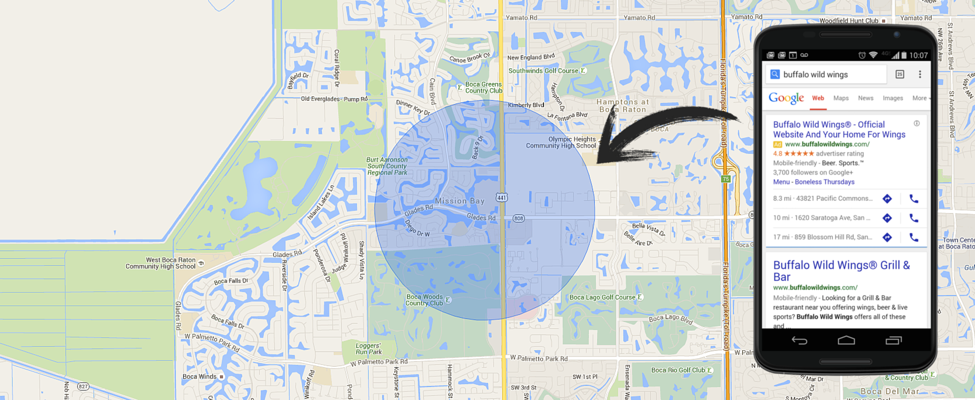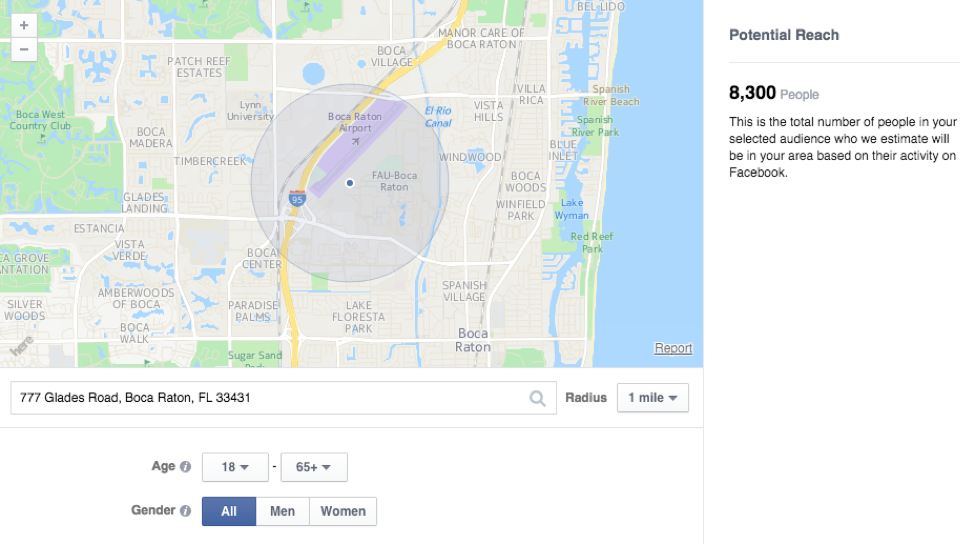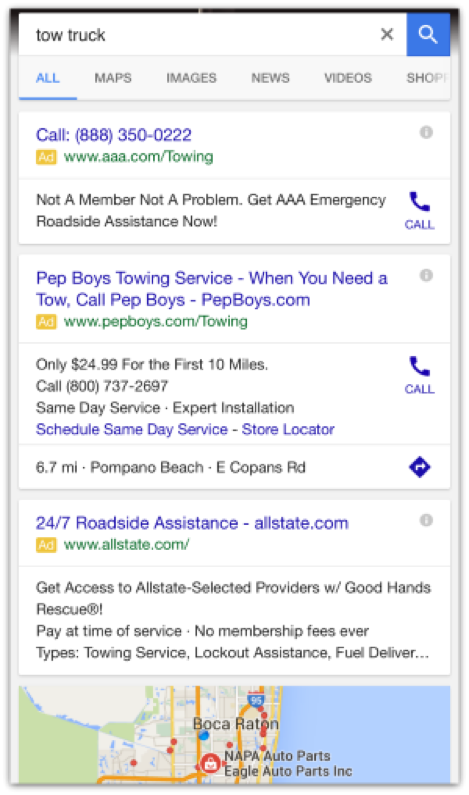Understanding Geo-Fencing

Over the last several years, you’ve probably heard the phrases location-based advertising, geo-fencing, or hyper-local advertising. But what does this mean for you and your business? In this article, we’ll take a closer look at these forms of digital advertising and how they can help you attract more traffic, leads, and customers.
For the purposes of simplicity, we will roll all of the phrases mentioned above into the overarching term “location-based advertising.” While there are certainly distinctions that can be made between each phrase and what it represents, the general idea remains the same regardless of what we call it:
Location-based advertising is a form of advertising that uses the real world position of a consumer to deliver hyper-local, targeted messages at ideally the right time.
The driving force that allows location-based advertising to work is the Global Positioning System (GPS). With 64% of American adults now owning a GPS-enabled smartphone of some kind, there is a tremendous opportunity to leverage the location data of smartphone users to deliver targeted and personalized advertising at precisely the right time.

Source: http://adwords.blogspot.com/2015/04/store-visits-insights-gain-momentum_8.html
Virtually every smartphone produced today contains a GPS chip. These GPS chips read and interpret signals from satellites and use those signals to identify the real position of the user. GPS chips can also use tower triangulation to figure out your current position. This is the underlying technology that has driven a surge in location-based advertising. With such technology, figuring out the location of a consumer is something that takes seconds or at most a few minutes.
Facebook and geo-fences
Facebook has a robust location-based ads platform that uses geo-fences to set up locations around businesses. In simple terms, geo-fencing in location-based advertising refers to a specific area on a map. The method relies on procured GPS coordinates around a selected location to create an imaginary fence.
The choice of location must be strategically selected based upon how it correlates with the target audience. The extent of this geo-fence depends on the goals of the advertiser and the ad campaigns. For example, you can geo-fence football stadiums all over the United States and acquire an active audience of football game attendees.
Keep in mind however, in order for these ads to appear on Facebook for instance, the user would have to be within the boundaries of the geo-fence and would also need to have the Facebook app active and opened.
As an example, below is a geo-fenced area in the form of a one-mile radius around a college campus:

Examples of geo-fence ads
Of course, while Facebook is a great choice for location-specific campaigns, it is certainly not the only choice. Google’s AdWords platform offers similar targeting and functionality. Here are examples of what a geo-fenced ad might look like on that platform:

And here is a location-specific ad in a mobile app:

Lastly, here’s a geo-fenced advertisement popular yogurt chain Pinkberry ran in the neighborhood of a competitor, in an effort known as “geo-conquesting:”

Source: http://www.xad.com/media-mentions/the-mobile-local-opportunity-by-the-numbers/
This Pinkberry campaign was so effective, that it actually increased their brand’s campaign benchmark by 2X in just two weeks!
One thing you’ll immediately notice is that these particular ads look identical to many other types of mobile ads. The primary difference is the targeting behind them.
Furthermore, there is a misconception that location-based advertising allows marketers to send unsolicited push notifications to users without their permission, even when their phone is not currently in use. This is simply not the case, at least as it pertains to location-based advertising opportunities through Facebook’s advertising network or similar networks.
Why location based advertising is so effective
Location data contains powerful information for marketers. Once you add in location history, you open a new world of possibilities. The location visited by a consumer reflects an image of their life. It can tell us about their preferences, hobbies, and interests.
And once you have the necessary information, the call-to-action that you deliver with your ad can certainly vary based on your specific business, product, or service. Here are just a few of the calls-to-action Facebook allows you to use in their location-based ads:
Send Message – Get private messages right from your ad in News Feed.
Call Now – Get calls right from your ad in News Feed and speak directly to potential customers.
Get Directions – Let people be guided directly to your location right from their phones.
Learn More – Send people to any page on your website to give them information.
Furthermore, numerous other factors are making this marketing channel very effective. These include:
Personalization
Personalized messages have a better response than generic messages. Location-based personalization is no different. By presenting people with personalized ads based on their location, there are higher chances that you will show them something important and relevant. It does not make sense to present one-size-fits-all messages hoping that they might resonate with your audience. Location data can help you personalize your ads with ease.
Timeliness
One of the core reasons behind the success of location-based advertising is timeliness. Since location data is delivered in real-time, businesses can gain the attention of potential customers at precisely the right moment. For example, store beacons inform shops the moment you walk in. In such a situation, retail brands can send relevant offers to people in that instance.
Targeting
Generic displays are long gone. Due to modern technology, marketers have huge amount of data at their disposal, which leaves no excuse for not creating targeted messages. Many people block ads on their browsers because they feel they are not relevant. However, with proper targeting, ads will be more relevant, which will lessen the chances that they will be ignored or blocked.
Putting it all together
The future of local digital advertising is grounded in location-based targeting. Days are long gone where advertisers and marketers broadcast messages to people recklessly, trying to reach as many consumers as they possibly could. If your marketing campaigns are not relevant, timely, and customized, then they are going to be ignored. Location-based advertising can help you reach all of those goals.
However, it is important to use location-based advertising in conjunction with other tools and tactics. If you rely solely on location data, you might still come up short when trying to compel your audience to take action. As noted by MediaPost author Tim Jenkins:
“Serving a dog food ad to a customer standing outside a pet store won’t do much if that customer is a cat owner. But serve a dog food ad to a dog owner near the pet store, and you may prompt a purchase. The key is to target by audience — who they are, not just where they are.”
In closing, location-based advertising is certainly worth testing if you’re looking for a new way to reach a local audience. And with mobile technology advancing at a tremendous pace, this technology will only continue to grow and improve in the years ahead.

